Art reviews: Dislocations | Ruth Ewan | Martin Boyce
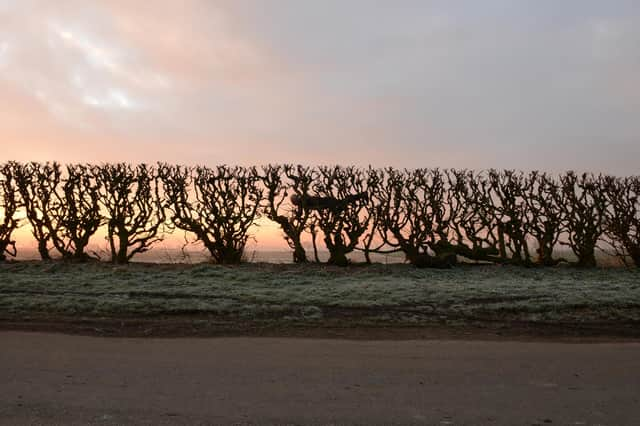

Dislocations: Territories, Landscapes and Other Spaces, Hunterian Art Gallery, Glasgow *****
Ruth Ewan: We Could Have Been Anything That We Wanted To Be and It’s Not Too Late to Change, Cooper Gallery, Dundee ****
Advertisement
Hide AdMartin Boyce: No Clouds or Streams, No Information or Memory, Modern Institute, Glasgow ****
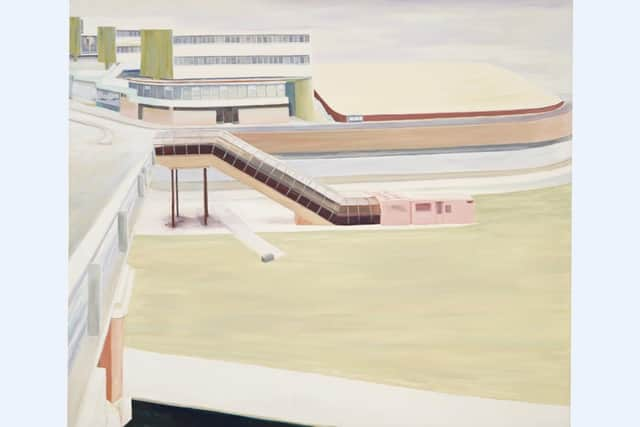

As galleries try to recover their schedules from the disruption of the last 18 months, anomalies are surfacing, like Dislocations at the Hunterian Art Gallery, which was conceived as a companion piece to a historical show due to happen in August 2020. In the event, Old Ways, New Roads: Travels in Scotland 1720-1832, looking at the mapping and exploring of the country from the military roads built to subdue the Jacobites to the beginnings of romantic tourism, took place online, leaving Dislocations to stand alone.
Fortunately, it does so very well, bringing together a broad church of modern and contemporary artists exploring diverse attitudes to landscape. Carefully and thoughtfully curated by Glasgow University’s Dominic Paterson, it reveals a spectrum of approaches, from pastoral to political to industrial, and shines fresh light on some signficant works by comparing and contrasting them with others on similar themes.
At one end of the gallery, we find Margaret Salmon’s 2016 film Eglantine, about her young daughter having an adventure on a camping holiday. It has the qualities of the best children’s books: a perceptive, capable heroine to whom the natural world reveals itself. At the other end, a new work by Minty Donald and Nick Miller looks at the industrialisation of the landscape through four commodities: peat, coal, granite aggregate and quartz sand. However, the artists transform mechanised, impersonal processes by creating sculptural casts of each material cupped in the hands of an employee. Downstairs in the sculpture courtyard, visitors are invited to make their own handfuls.
Between these two works is a spectrum of views of landscape: Paul Nash’s Rain or No Man’s Land, figures trudging through a ravaged warscape; Fay Godwin’s superb photographs – Meall Mhor’s snowy head towering above a two-lane highway, wilderness fenced off with a “private” sign; a film of Andy Goldsworthy crawling through a hedge at dawn; and Ian Hamilton Finlay’s prints marking out Little Sparta as a battle ground.
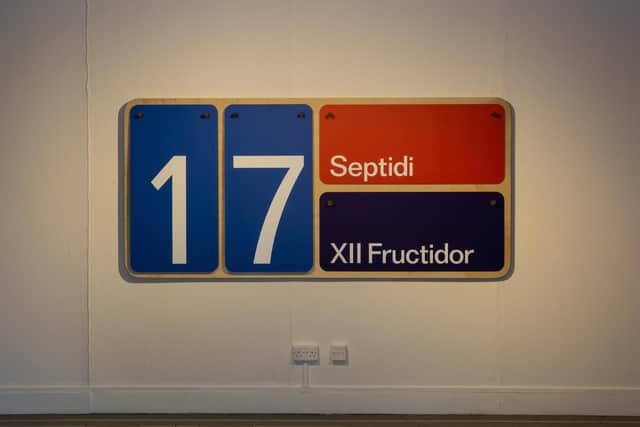

Further on, we find Louise Hopkins and Thomas A Clark remaking maps, Carol Rhodes’ unpeopled visions of industrial areas, Jessica Warboys’ monumental paintings created at least in part by the sea itself, and Charlotte Prodger’s film LHB, which includes footage of the artist urinating at locations on either side of the Scots-English border, a visceral reclaiming of territory.
Advertisement
Hide AdProdger’s work is important because it takes us to the heart of how we often experience landscape these days – flashing past the window of a train or glimpsed on a mobile phone screen. It also explores how we can be in one landscape and still be intimately connected to another: making her film in Berwickshire, Prodger is reading obsessively online about queer women hiking the Pacific Crest Trail in North America.
Despite what the title suggests, Dislocations is not about a growing disconnection to the landscape, but rather about the multifarious ways we experience and represent it. By bringing together works from different eras (many of them by major artists) in unusual and unexpected ways, it opens up multiple perspectives on the subject. While acknowledging that landscape is mistreated, plundered and contested, it also reminds us that it still has the power to enchant.
Advertisement
Hide AdMeanwhile, Ruth Ewan’s solo show at the Cooper Gallery in Dundee brings an entire landscape right into the gallery: a meadow of wild flowers and grasses. Ewan’s work is informed by the radicalism of the past, and How Many Flowers Make the Spring? plays on the common link made between spring flowers and grassroots politics (from the Flowers of the Forest to the Arab Spring). As we breathe the fresh meadow air, we listen to five activists speak about their lives.
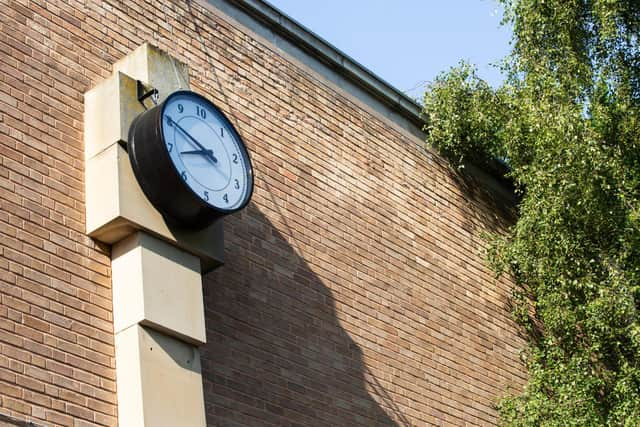

Ewan’s exhibition is part of the Cooper Gallery’s five-part project The Ignorant Art School: Five Sit-Ins Towards Creative Emancipation, which is rooted in a similarly radical, hopeful spirit. Workshops and events during lockdown helped participants connect to Dundee’s radical past, from the French Revolution to the Timex dispute. Core to Ewan’s work is that the idea that radicalism is a continuum; the call to action goes on, including to us, the viewers.
Radical thinking is about having the courage to imagine the world differently, embodied here in the French Revolutionary Calendar, with its decimalised ten-hour days and ten-day weeks. There is a perpetual calendar in the lower gallery and a clock on the outside of the building. Somehow the show manages to embody simultaneously the fact that most radical enterprises (the calendar included) are more idealistic than successful, while still conveying hope in the possibility of change. The mood is one of optimism.
A very different mood is evoked equally effectively in Martin Boyce’s solo exhibition at Modern Institute’s Airds Lane space. The Glasgow-based artist, who won the Turner Prize in 2011, works with architectural space and design and some of his best installations use these components together to create powerful atmospheres.
Walls and dividers create a closed-in space in the gallery with a kind of looming quiet. The room is barricaded against the outside world; there are three doors, each with a chair jammed under the handle. Meanwhile, the space is furnished with coloured vertical panels, each with a wall-mounted landline phone attached, though instead of numbered buttons they have abstract shapes relating to a modernist alphabet Boyce developed.
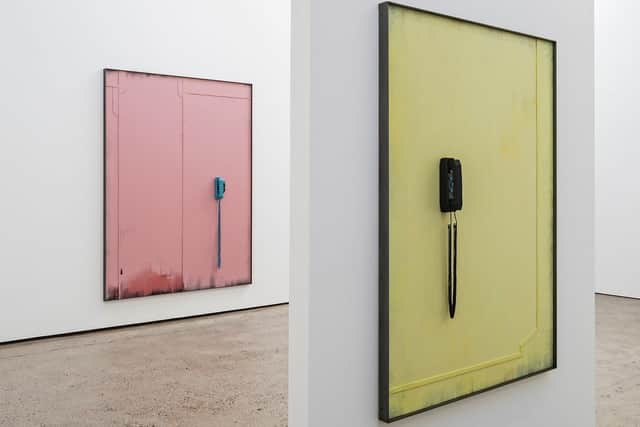

They look quaint and a little forlorn, while the paint in the panels is fading or stained; it feels like an office-of-the-future design decades ago, then sealed up and forgotten. The world, meanwhile, has moved on, communicating through “streaming” and “the cloud”, storing digital memories in invisible technology.
Advertisement
Hide AdBoyce manages to suggest human presence while conveying its absence in the barricaded doors and silent phones. Marked by his characteristic attention to detail – each panel is subtley different – and playing with vertical and horizontal planes, this is a unsettling show which makes its various elements work fluidly together to create a simultaneous sense of vulnerability and menace.
Dislocations runs until 5 December; Ruth Ewan and Martin Boyce until 23 October
A message from the Editor
Advertisement
Hide AdThank you for reading this article. We're more reliant on your support than ever as the shift in consumer habits brought about by coronavirus impacts our advertisers.
If you haven't already, please consider supporting our trusted, fact-checked journalism by taking out a digital subscription at https://www.scotsman.com/subscriptions